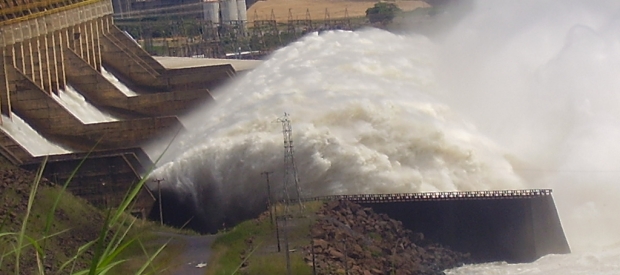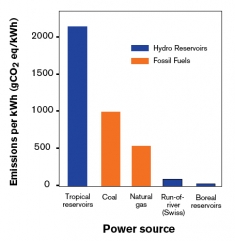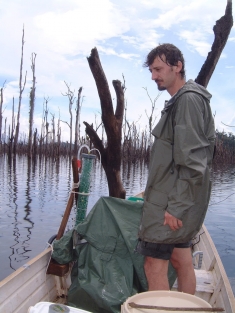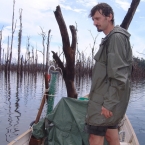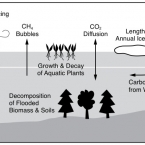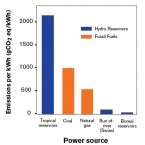Reservoir Emissions
A growing number of scientific studies indicate that reservoirs, especially in the tropics, are a significant source of global greenhouse gas pollution. Brazilian researchers estimated in 2007 that methane from dams is responsible for around 4% of human-caused climate change.
Where Do the Emissions Come From?
Greenhouse gases, primarily methane (CH4) and carbon dioxide (CO2), are emitted from all of the dozens of reservoirs where measurements have been made. Gases are emitted from the surface of the reservoir, at turbines and spillways, and for tens of kilometers downstream (see schematic). Emissions are highest in hot climates. Hydro plants in the tropics with large reservoirs relative to their generating capacity can have a much greater impact on global warming than fossil fuel plants generating equivalent amounts of electricity (see graph below).
The "fuel" for these emissions is the rotting of organic matter from the vegetation and soils flooded when the reservoir is first filled. The carbon in the plankton and plants that live and die in the reservoir, the detritus washed down from the watershed above, and the seasonal flooding of plants along the reservoir fringes, ensure that emissions continue for the lifetime of the reservoir. Emission levels vary widely between different reservoirs depending upon the area and type of ecosystems flooded, reservoir depth and shape, the local climate, and the way in which the dam is operated. For instance, China's reservoirs are often deep but sludge-filled, while Brazil's reservoirs are shallow and in a tropical zone. Both cases can lead to high emissions.
What is Currently Being Done About It?
The role of reservoirs as climate polluters is finally attracting the attention of the broader climate science and policy communities. The hydropower industry, however, has consistently tried to mislead policy makers by downplaying the scale of emissions from reservoirs.
One intriguing aspect of this issue is proposed new technologies to capture tropical reservoir methane and use it to generate electricity. Such technologies, which began field-testing in Brazil at the end of 2007, could greatly reduce the climate impact of hydropower and, by increasing electricity supply, also reduce the need for new dams.
Through reports, media work, speaking engagements and lobbying at international conferences, International Rivers has played a key role in educating climate policy makers and NGOs and the media about this issue. International Rivers' work helped convince the Executive Board of the Kyoto Protocol's Clean Development Mechanism to rule that hydro projects with very large reservoirs relative to their generating capacity cannot currently apply for CDM carbon credits.
- Google Earth 3-D Tour: Wrong Climate for Damming Rivers
- Dirty Hydro: Dams and Greenhouse Gas Emissions, International Rivers factsheet
- Frequently Asked Questions: Greenhouse Gas Emissions from Dams
- Advancements in the Field of Reservoir Emissions Research (report)
- Fizzy Science: Loosening the Hydro Industry's Grip on Reservoir Greenhouse Gas Emissions Research (report)
- Bibliography of Key Scientific Articles and Publications on Greenhouse Gas Emissions from Dams and Reservoirs

